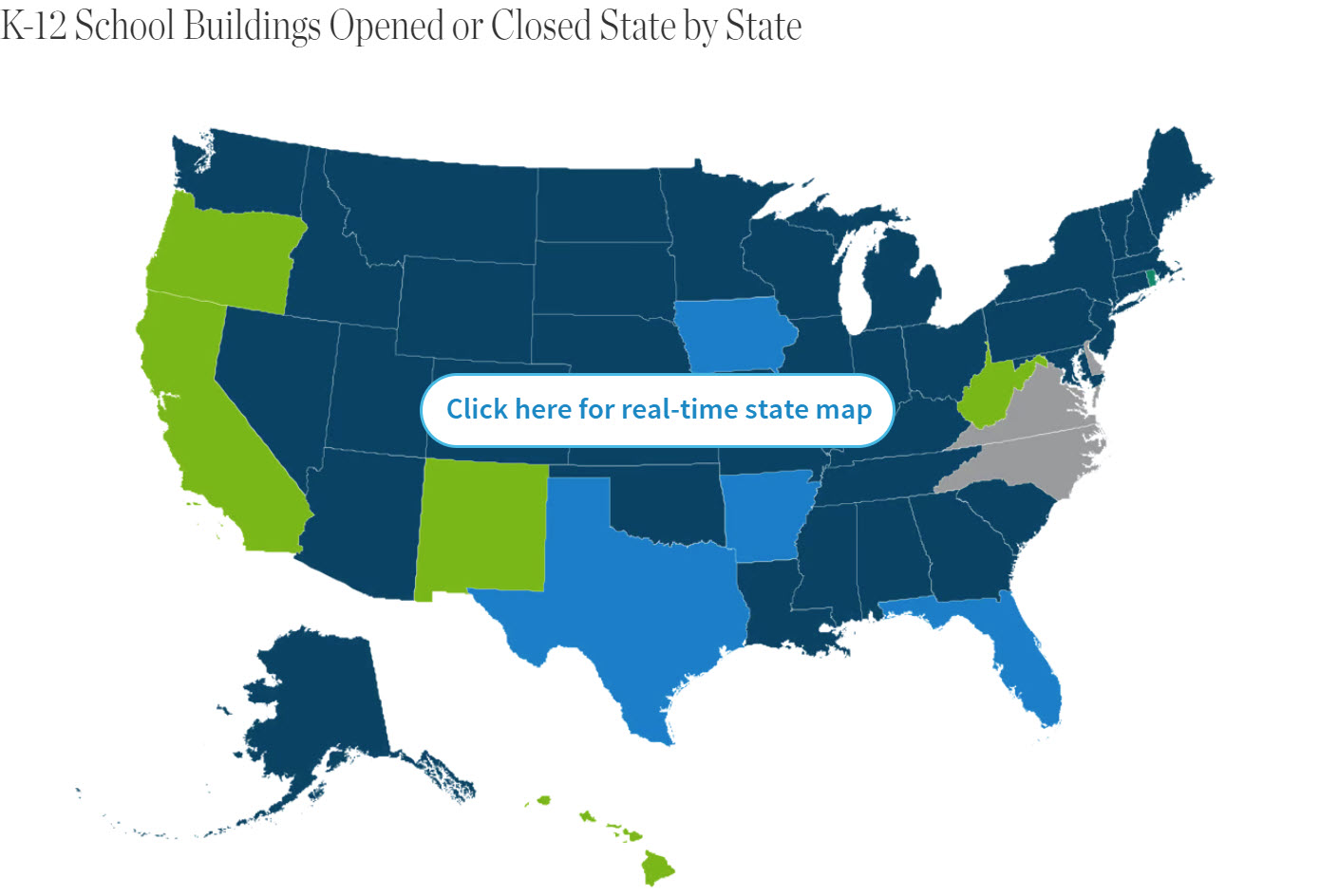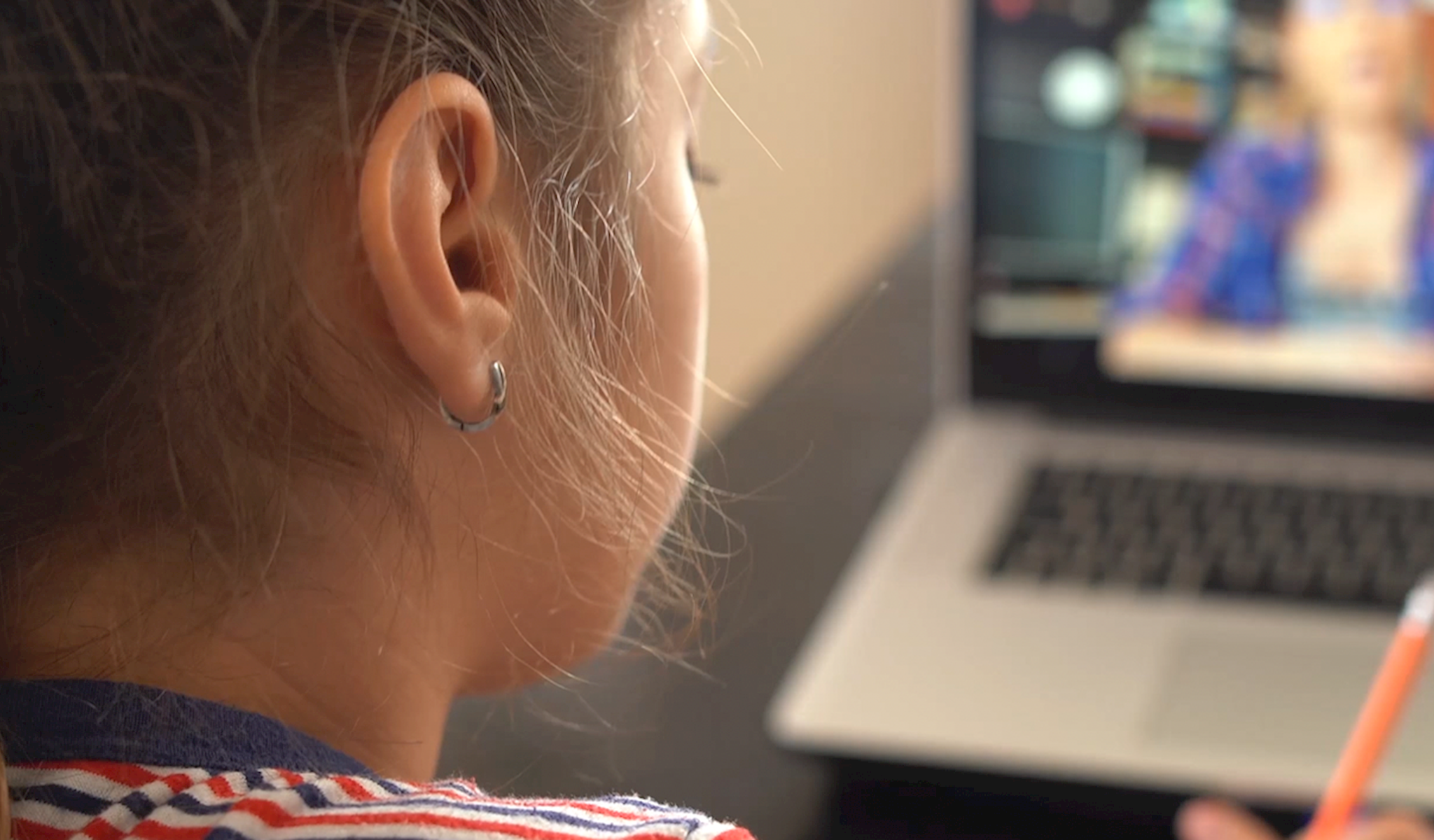The tradition of heading back to school in the fall took on a whole new meaning this year.
As 56 million pre-K–12 students and some 20 million college students prepared to resume classes across the country, schools, universities, administrators, educators, and parents faced serious questions about the risks to students and staff returning with COVID-19 cases on the rise.
Should we start classes online? Will we be going back to school in person? Are we going with some hybrid model? What happens if someone catches the virus in school? Can we just shut down and send everybody back home?
By mid-August, the first wave of reopened schools had already suspended classes after positive COVID tests. By the end of the month more than 25,000 positive cases had been discovered at 1,500 schools canvassed by the New York Times.

The chaotic start to the school year appeared to underscore only one certainty: the surge of online instruction. Schools raced to embrace this in the spring but demand looks set to grow even larger in the months and, perhaps, years ahead.
“We have to rethink everything,” says Brandon Dobell, a managing director with William Blair’s investment banking education group. “You have a massive breadth of potential outcomes around how kids learn, the role of parents, the role of educators, how school is structured. Anytime you take an industry and put it inside a cocktail shaker and shake it a bunch, what comes out is chaos.”
Accelerating a trend
Broad structural trends in the economy to adapt to digital tools were already in place before COVID-19. Those have accelerated. And analysts see a greater chance for a new normal than going back to the pre-COVID ways any time soon—if ever.
“Chaos breeds opportunities, particularly technology solutions to answer some of these questions to help administrators, parents, students to try and deliver or get the same outcomes as we were getting with the face-to-face models,” Dobell says.
Fortunately, online educational solutions were taking root long before COVID. The educational technology sector (“ed tech”) had established instruction models from click-through tutorials to Zoom meetings to classroom assessment tools. Zoom meetings pioneered in corporate training expanded into grade-school classrooms, and the first wave of online-college courses seen in the last decade expanded. Teachers, long resistant to using online learning tools, have had to adapt.
Justine Chiou, a William Blair banker with the education team, agrees that necessity is now the mother of invention in the sector.
“The pandemic has forced the global education system to really rethink how it operates,” she says. “It affects everything from when and how to learn and how to deliver it all the way to getting the right content in the hands of teachers and students and thinking about how pedagogy really works in a remote environment.”
Red-hot demand
Above all, analysts see two big factors likely to keep driving ed tech. Demand has exploded and the timeline for it is looking open-ended.
While most parents last spring had hoped or even assumed that COVID would be tamed and schools would resume by fall, Dobell says COVID shocks have already changed business as usual in schools, likely for good.
“The days of squeezing 30 kids in a classroom or a couple hundred college students in a lecture hall for a concentrated period of time could be limited going forward,” Dobell says. “Even with a vaccine, education has changed forever.”

Deborah Quazzo, a long-time William Blair client and the managing partner of GSV Ventures—a venture capital fund that invests in start-ups such as Coursera, Clever, ClassDojo, Course Hero—is seeing similar trends.
“With 1.6 billion learners abruptly thrown into the deep end of online learning by COVID, we are seeing both the potential and the pitfalls of ed tech,” Quazzo says.
“The fact that last spring many school systems were not ready to go online, did not have teachers prepared, and the inequity of low-income students lacking the bandwidth and devices to be able to do digital learning at home just elevates the need for change.”
Colleges under pressure
At first glance, colleges and universities, with their well-motivated and tech-savvy student population, would seem to be among the better-placed education sectors to weather the COVID storm. But that is not the case.
Soaring college tuition bills and punishing debt loads were big issues before COVID crippled the economy and sparked tens of millions of job losses among Americans.
Now, both private and public colleges are under intense pressure to deliver a degree at more affordable prices. COVID has put $30,000+ annual costs for on-campus students in a glaring spotlight.
The consultancy McKinsey released in April 2020 an economic model on the potential budget shortfalls that higher-education institutions could face as a result of COVID.
“Even under the more modest virus-contained scenario, 25% of public four-year institutions and almost half of private not-for-profit four-year institutions could suffer budgetary shortfalls of more than 5%, absent a public or philanthropic intervention,” McKinsey says.
Dobell notes: “You have a lot of higher education institutions that could fail because they are not set up for a tuition amount that doesn’t keep going up 5% per year.”
And if students cannot attend classes on campus?
“Parents and students will question whether the online model or hybrid mode provides the same amount of value as an on-campus experience,“ Dobell says. “If the answer is no, parents will start pushing back against traditional price points. This is especially true in today’s environment as the value proposition of degrees that don't lead to a career is under more scrutiny now than ever before.“
With 1.6 billion learners abruptly thrown into the deep end of online learning by COVID, we are seeing both the potential and the pitfalls of ed tech.
Deborah Quazzo
Ed tech rushes to provide a safety net
Even at colleges, digital learning faces a steep curve.
As of 2018, 6.9 million American college students took at least one course online. Three million were taking classes exclusively online. However, there were 12.7 million students who did not take one course digitally.
As a result, many digital ed-tech entrepreneurs are pushing hard and fast to look for quality solutions.
For example, 2U, which contracts with nonprofit colleges and universities to offer online degree programs, launched five new programs with its university partners this year with plans to introduce at least 10 in 2021.
Chegg, a provider of online learning resources, said its second-quarter subscribers grew close to 60%, almost matching full-year levels in 2019.
Quazzo says she’s excited about a new tech company, ClassEDU, which is teaming up with Zoom to build a flexible platform to more closely replicate face-to-face teaching. Among the features: video breakout rooms and collaboration tools that more easily allow multi-person sharing.
At William Blair
At William Blair, the education team in investment banking has also seen a steady flow of business despite a slowdown in many sectors since the pandemic exploded.
Whether its startups looking to raise capital, investors looking to acquire the next breakthrough for educational experiences, or established companies implementing new strategies, ed-tech providers are attracting lots of interest.
“In today’s environment we're seeing a lot of legacy models embrace change more quickly to think about how to embrace innovation better, to find more effective ways to deliver to learners,” says Chiou.



